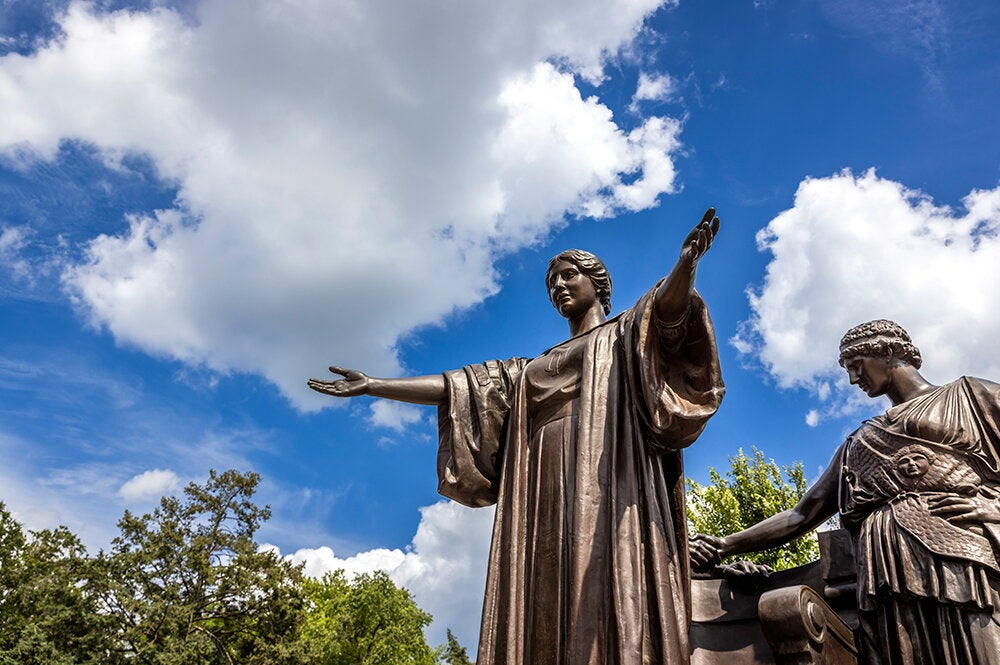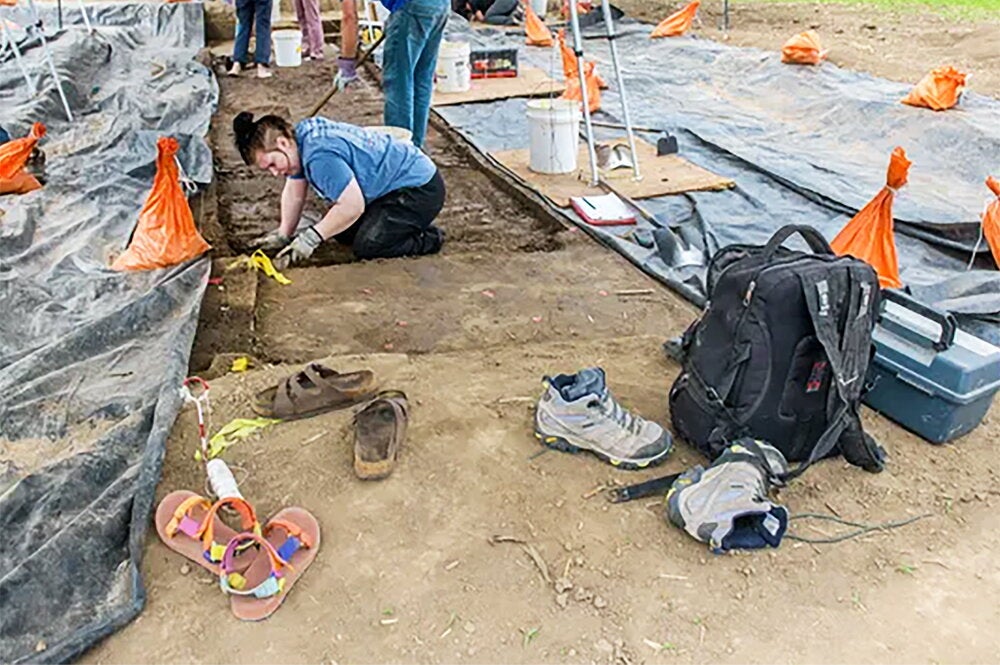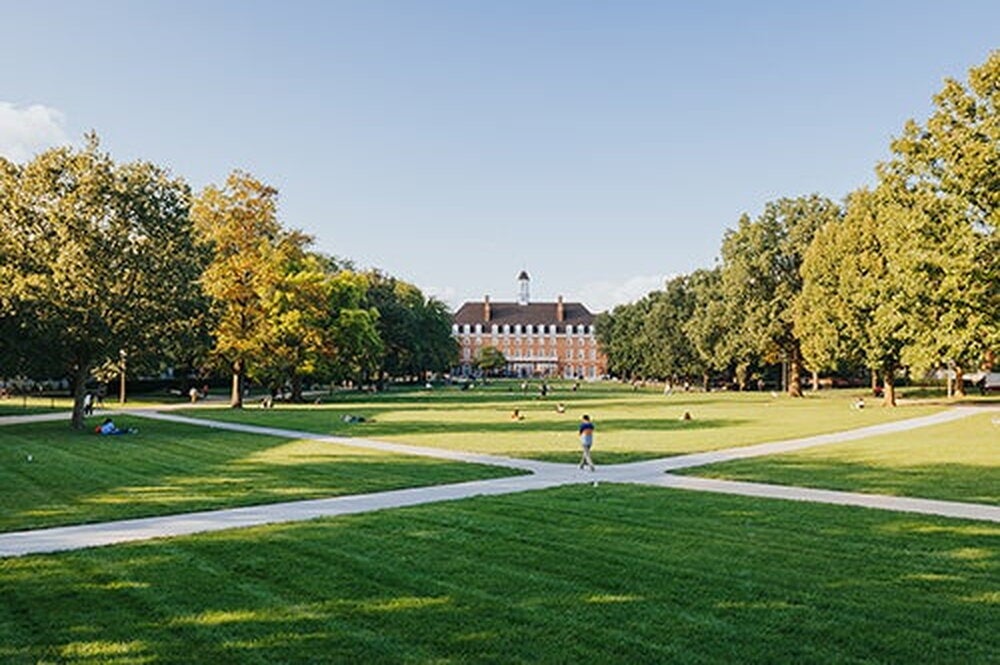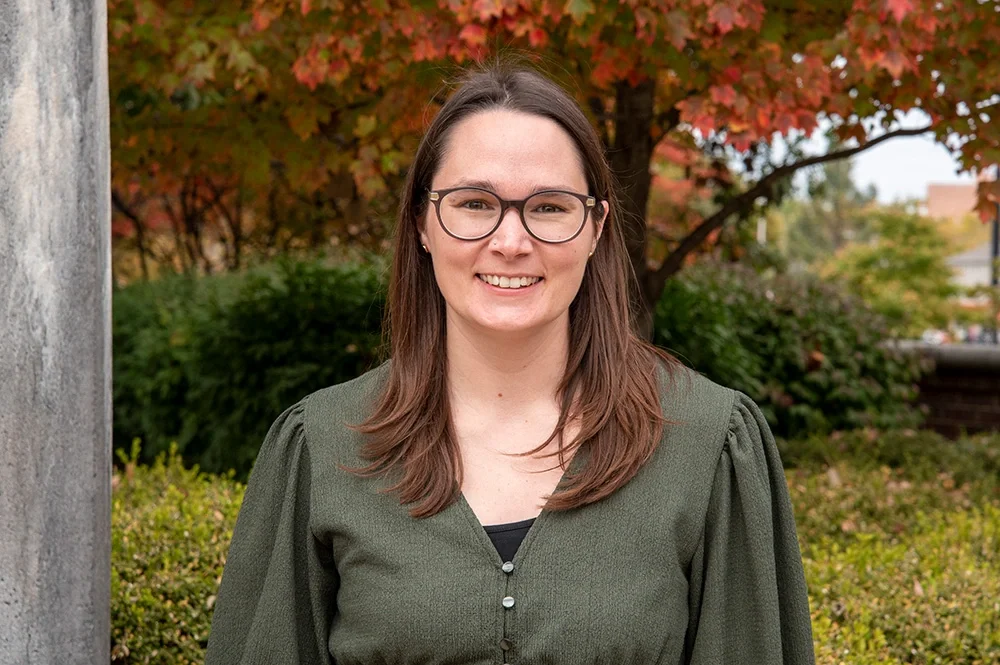
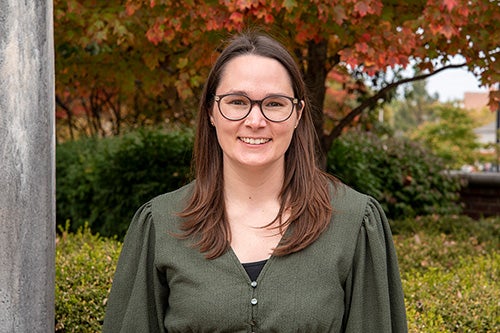 Jennifer Grove (BS, ’15, anthropology) is the collections storage coordinator at Spurlock Museum of World Cultures on campus. Jennifer worked at the museum during her undergraduate studies and has returned as a full time staff member using her degree to oversee day-to-day activity within the artifact preservation center.
Jennifer Grove (BS, ’15, anthropology) is the collections storage coordinator at Spurlock Museum of World Cultures on campus. Jennifer worked at the museum during her undergraduate studies and has returned as a full time staff member using her degree to oversee day-to-day activity within the artifact preservation center.
What do you remember of your first visit to campus?
I was attending Richland Community College (shout out to LAS transfer students!) and enrolled in an archaeological field school offered by the University of Illinois Urbana-Champaign. As part of that program, my first visit to campus was to speak with an anthropology professor about the field school. It was right after finals, so campus was quiet and warm.
My next visit to campus was as a transfer student the following year, and I attended an orientation at Spurlock. Later that year I started an undergraduate student position with Spurlock Collections, which ultimately led me to focus my anthropology degree on museum studies. I was thrilled in 2023 to become part of the Collections team again, now as a staff member.
How long have you worked with the university?
I have worked for Spurlock Museum in variety of capacities for a total of seven years. I have been in my current position at Spurlock for about a year and a half. Prior to this position, I worked for the museum in an extra help position as a collections preservation assistant and about a decade ago I worked as an undergraduate student employee with collections for three years and volunteered with them for two years after graduation.
Describe your responsibilities.
I oversee daily activities in Spurlock Museum’s Artifact Preservation Center. The center is a dedicated collections storage area where artifacts are cared for in a secure, clean space that fosters long-term preservation. My work includes the following: I supervise a team of undergraduate and graduate student employees and train them in basic preservation skills. We prepare artifacts for exhibits, university class visits, internal museum research and processing as well as scholarly research. That process includes retrieving artifacts from their home in storage, cleaning the artifacts, and writing detailed condition reports. Additionally, I construct advanced artifact supports and mounts and complete technical and challenging artifact cleaning. During that process my students learn basic artifact support and mount making skills as well. Recently, I have started to train with our Senior Collections Manager in ceramic and wood repair. I also assist in exhibit installation and serve on the museum’s marketing committee.
How does your major connect with you work?
In anthropology we are taught to approach an idea, situation, or even an entire culture from a holistic point of view – all aspects are interconnected. Caring for over 50,000 artifacts definitely requires a holistic approach. To do my job well, I must consider the collection as a whole to know what parts I can move where, what items should be together or separate, and how much time, energy, and space I can allocate to any one artifact.
In addition, studying cultural belongings from an anthropological view allows us to learn other ways of knowing. For example, we have hundreds of baskets in our collection and none of them are identical. Different material types, patterns of construction, and the intended use of each basket makes them unique. There are countless ways to know how to create and use a basket. Recognizing that each way of knowing has value is imperative in our work at Spurlock. Too often certain ways of knowing, particularly measurable data, logic, and patterns are prioritized and even intentionally privileged. Artistic, spiritual, ancestral, natural, and practical ways of knowing can be marginalized. Focusing on this area of study can expand understanding around what lies at the core of conflicts, systemic barriers to change, and inequity. By valuing all ways of knowing, we uphold our mission to foster compassion and empathy, amplify community voices, and inspire further exploration.
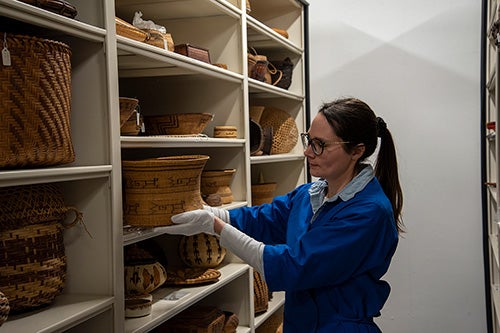 What do you enjoy most about your job? Do you have a favorite memory or project from your role with your unit?
What do you enjoy most about your job? Do you have a favorite memory or project from your role with your unit?
While a good amount of my job is spent facilitating daily tasks in the Artifact Preservation Center, I love working closely with an artifact or belonging in our collection. When an artifact is happy, I am happy. Cleaning, building a supportive mount, or making storage more efficient and accessible can make a big difference for an artifact. And just like with people, the more time you spend with an artifact the better you get to know it. I love seeing patterns of use and the artistry of an object’s creator. Every artifact carries with it the evidence and energy of people who made, used, and cared for their personal or societal belonging and it is simply amazing to be able to connect with that shared humanity.
A fun project that I really enjoyed recently was creating a video for our social media that is from an artifact’s point of view. What does an artifact see as it is prepared for a university class visit? The answer is people! I was so happy to feature some of my students as well as students and staff from other sections in the museum and show some of the work we do behind the scenes. You can see the video and read about the process on our website’s blog.
What is Spurlock Museum’s best-kept secret?
The museum is free and open to all! Spurlock offers free exhibits, tours, programs, events, and activities and everyone is welcome to attend! We would love for you to come visit.
Our collection is also searchable on the website! If you are a student, staff, or faculty member, check out our online database to see if we house something that might supplement or advance your research or area of study. We have a wide range of artifacts from across the world and time, ranging from paleolithic stone tools to the first transistor radio and everywhere in between and beyond.
Editor's note: This is part of a series that features College of LAS alumni and their careers. Visit here to read more.
